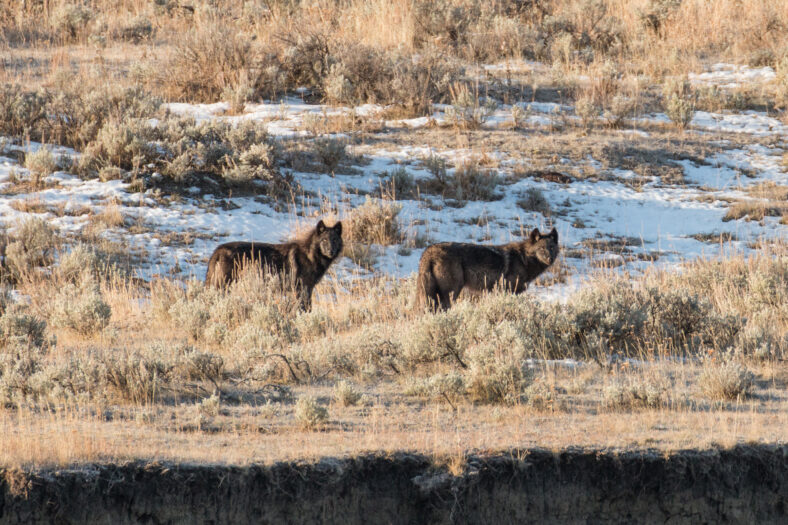The Skeleton Of A Yellowstone Wolf Was Made Into A Display To Help Educate Future Generations And Improve Conservation Efforts

At Yellowstone National Park, wolves aren’t as common as animals like bison, but they are around and have been building up their population over the past 60 years.
Back in 1995 and 1996, wolves were reintroduced into the park. Since then, their numbers have nearly tripled to between 120 and 130 at Yellowstone.
There is one wolf called Wolf 302M that has been honored by the Yellowstone Heritage and Research Center through a display. Wolf 302M lived for 9.5 years, which is double the average lifespan in the area.
“Last month, Yellowstone’s museum staff teamed up with park carpenters to carefully prepare and relocate the articulated skeleton of wolf 302M (2000 to 2009) into a stunning display at the Yellowstone Heritage and Research Center,” wrote Yellowstone National Park.
The carpentry crew made a special crate to transport the skeleton safely, “minimizing movement and potential damage.”
It took meticulous work to sort and identify the remains of Wolf 302M. The team connected the bones with materials like epoxy, glue, wires, and pins.
Wolf 302M was featured in various projects, such as the PBS documentary In the Valley of the Wolves and National Geographic’s Rise of Black Wolf.
The wolf’s skeleton tells the story of his survival at the park. Signs of advanced tooth decay, a healed tail injury, twisted ribs, and broken vertebrae shed light on the struggles he endured and the battles he faced.
Wolf 302M was born in 2000 into the Leopold Pack. He spent many years mating, protecting, and providing food for his pack in the northern range of Yellowstone.

Sign up for Chip Chick’s newsletter and get stories like this delivered to your inbox.
During his early life, he lived only with his brother and three other siblings after an attack by a larger pack. He was given the nickname “Casanova” because he was known for mating with many females, while most other wolves are monogamous.
In 2008, Wolf 302M left his pack and joined the Agate Creek Pack, which consisted of females. Together, they formed the Blacktail Deer Plateau Pack.
In 2011 and 2012, it was the largest Northern range pack, with a total of 15 wolves. Wolf 302M became the Alpha of the pack.
He died in October 2009 due to injuries inflicted by other wolves. After his death, he was replaced as the Alpha by Wolf 778M.
The new insights into the life of Wolf 302M can help educate future generations and improve conservation efforts. Thanks to Yellowstone National Park, Wolf 302M’s memory will be preserved forever.
You can visit the skeleton at its new home in the Yellowstone Heritage and Research Center between 9 a.m. to 4 p.m., Monday through Friday.
Photos of the display were posted on the Yellowstone National Park’s Instagram page. You can view the post here.
More About:Animals





